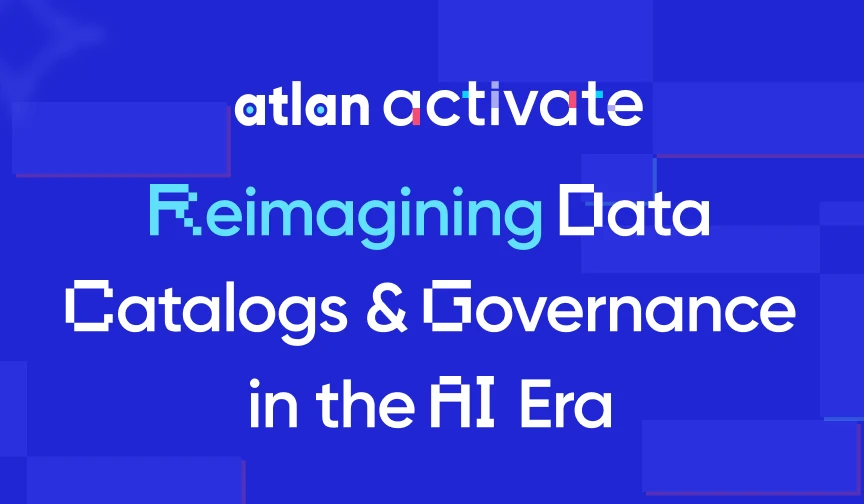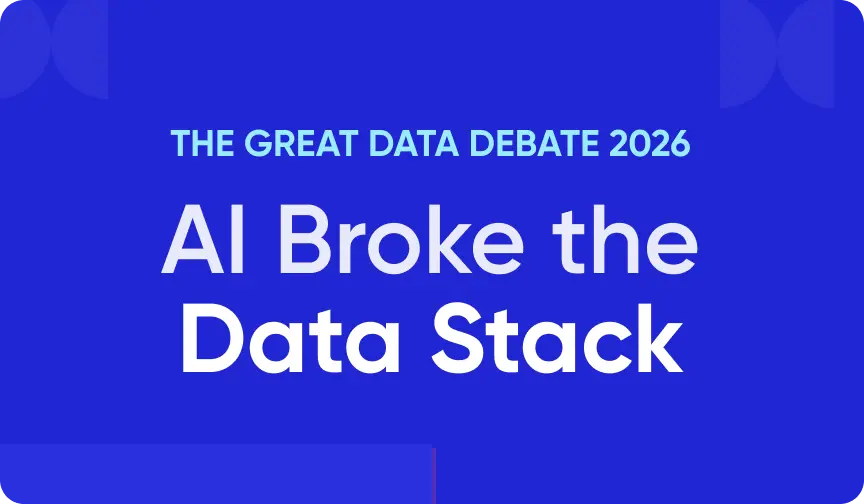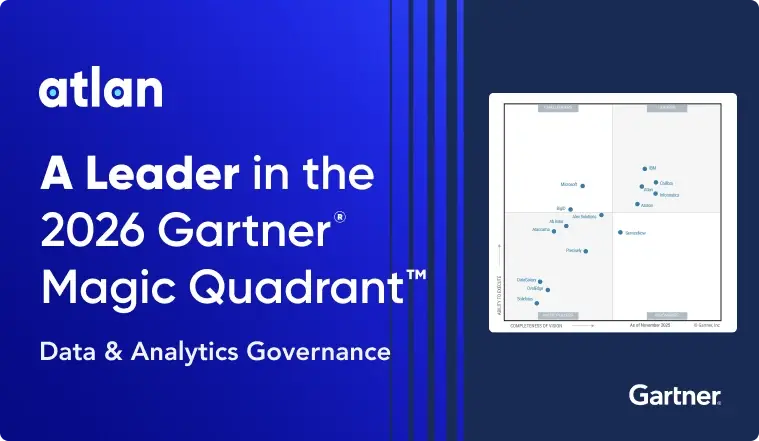Data Catalog Requirements in 2024: A Comprehensive Guide

Share this article
A data catalog should be able to manage diverse data assets, provide end-to-end visibility to users, handle metadata as big data, enable user collaboration, and a lot more.
Why? Because having a solid understanding of your organization’s data is crucial for making informed decisions. A data catalog serves as a centralized hub that provides users with quick and easy access to relevant data.
In this guide, we’ll explore essential data catalog requirements. From metadata management to search functionality, we’ll cover what you need to know to build a robust and user-friendly data catalog.
Table of contents
Permalink to “Table of contents”- What should a data catalog contain?
- Steps to evaluate data catalog tools and craft an effective RFP
- Key considerations for selecting the perfect data catalog tool
- Conclusion
- Related reads
What should a data catalog contain? Exploring key functionalities of a modern data catalog
Permalink to “What should a data catalog contain? Exploring key functionalities of a modern data catalog”A modern metadata management data catalog serves as a central hub for storing and organizing metadata. To ensure its effectiveness, a data catalog must enable seamless data discovery, efficient metadata governance, and collaborative data management.
Baseline requirements for a data catalog in the context of modern metadata management are:
- Management of diverse data assets
- End-to-end data visibility
- Handling metadata as big data
- Embedded collaboration
- Flexibility and scalability
- Integration with other data tools
- Data governance and trust
- User-friendly interface
Let’s dig a little deeper into each requirement.
Management of diverse data assets
Permalink to “Management of diverse data assets”A modern data catalog needs to go beyond traditional tables. You need to accommodate various types of data assets, including Business Intelligence (BI) dashboards, code snippets, SQL queries, predictive models, features, Jupyter notebooks, etc.
End-to-end data visibility
Permalink to “End-to-end data visibility”To establish a single source of truth for all data assets, a data catalog should provide visibility across the entire data lifecycle. This involves aggregating data from places such as data lineage tools, data quality tools, and data prep tools to eliminate data silos and provide a holistic view of your data.
Handling metadata as big data
Permalink to “Handling metadata as big data”The data catalog needs to treat metadata as a form of data that can be searched, analyzed, and maintained in the same way as all other data assets. This approach could entail parsing through query logs to automatically create column-level lineage. Furthermore, it can assign popularity scores to data assets or deduce potential owners and experts for each asset.
Embedded collaboration
Permalink to “Embedded collaboration”A data catalog should facilitate smooth collaboration among diverse data teams. It needs to integrate seamlessly into the team’s daily workflow, enabling actions such as access request approvals or reporting. This capability promotes efficiency and reduces tool fatigue among data teams.
Flexibility and scalability
Permalink to “Flexibility and scalability”In line with the modern data stack, a data catalog must be quick to set up and easy to scale. It should be cloud-based, eliminating the need for extensive engineering time for setup. Furthermore, it should be flexible enough to accommodate growing data and varying user requirements.
Integration with other data tools
Permalink to “Integration with other data tools”A data catalog should be interoperable with the tools used by diverse data teams, including SQL, Looker, Jupyter, Python, Tableau, dbt, and R. This interoperability improves usability and productivity.
Data governance and trust
Permalink to “Data governance and trust”While maintaining ease of use and scalability, a data catalog should also uphold and enhance data governance, trust, and context. It should aid in defining and enforcing policies for data usage and ensure the consistency, accuracy, and security of the data.
User-friendly and accessible interface
Permalink to “User-friendly and accessible interface”A data catalog should have an accessible, intuitive, and user-friendly interface to drive adoption among users. The design of the interface and user experience should not be an afterthought. In fulfilling this requirement, a data catalog can successfully facilitate data democratization in a diverse data environment.
Steps to evaluate data catalog tools and craft an effective RFP
Permalink to “Steps to evaluate data catalog tools and craft an effective RFP”Once you know the different functions of a data catalog, it’s time to look for one that meets your needs. Defining your needs and evaluating tools can be a significant task. Fortunately, a systematic approach makes it manageable.
Here’s a step-by-step guide on how to proceed:
- Define your business and technical requirements.
- Draft the RFP.
- Distribute the RFP.
- Evaluate the responses.
- Request demo(s) or trial(s) and choose which product best suits your needs.
- Check references.
- Finalize the vendor.
Let’s dive deeper into each step.
Define your business and technical requirements
Permalink to “Define your business and technical requirements”Which requirements of a modern data catalog align with your business objectives and data strategy? For example, if your team uses a particular set of tools, ensure that compatibility with these tools is one of your requirements.
Draft the RFP
Permalink to “Draft the RFP”An RFP should include a background of your organization and project. It should mention the specific requirements you’re looking for, the criteria you’ll use for selection, and the timeline for the vendor selection process.
Here are some categories you can include in your RFP:
- Vendor company profile: Basic information about the vendor, including company history, client base, and expertise.
- Product features: Detailed description of the product and its features, asking how they align with your requirements.
- Technical requirements: Details about the technical aspects of the product, including security, scalability, and compatibility with your existing tech stack.
- Implementation and support: Information about the implementation process, post-implementation support, training, and maintenance services.
- Pricing: Detailed pricing structure, including any potential additional costs for extra features or support.
Distribute the RFP
Permalink to “Distribute the RFP”Send the RFP to the list of vendors you’ve identified as potentially fitting your needs. Ensure you give them a reasonable timeline to respond.
Evaluate the responses
Permalink to “Evaluate the responses”Once you receive responses, evaluate them based on your selection criteria. It’s a good idea to include representatives from all user groups (data engineers, data scientists, analysts, business users) in the evaluation process to ensure usability across roles.
Request demo(s) or trial(s)
Permalink to “Request demo(s) or trial(s)”Ask the vendors who scored highly during the evaluation phase for a product demo or trial. This allows your team to explore the product hands-on and understand its usability and functionality better.
Check references
Permalink to “Check references”Contact some of the vendor’s previous clients to get their feedback. Ask about their experience with the product and the vendor’s customer service.
Finalize the vendor
Permalink to “Finalize the vendor”Based on the demo, trial, and reference check, select the vendor that best fits your needs and budget. Make sure to have a clear contract stating all terms and conditions related to product usage, support, and pricing.
By following this process, you can identify a data catalog tool that fits your needs. Remember, it’s crucial to involve all key stakeholders, including data users, throughout this process to ensure the tool meets everyone’s needs.
Key considerations for selecting the perfect data catalog tool
Permalink to “Key considerations for selecting the perfect data catalog tool”When narrowing down a data catalog tool, it’s important to look beyond just the features and the price. When it comes to data catalogs, making an informed decision involves factors beyond your essential requirements.
Here are some considerations to help ensure that you choose a tool that meets your current and future requirements:
- Integration capability: Your tools must integrate seamlessly with your existing data infrastructure and tools, supporting the data sources, BI tools, and data processing frameworks that you currently use or plan to use in the future.
- User experience: Your solution needs to be accessible, user-friendly, intuitive, and adaptable to the varying needs and skill levels of your diverse data users.
- Scalability: The chosen solution should scale as your data grows and your needs change. This includes both technical scalability ( increased data volume, variety, and velocity) and functional scalability (advanced features that you might need in the future).
- Security and compliance: Your tool should support robust data security measures and comply with relevant data privacy and governance regulations. If you work with sensitive or regulated data, this consideration is particularly important.
- Vendor reputation and stability: Evaluate the vendor’s track record, financial stability, and commitment to ongoing product development. You don’t want to invest in a tool only for the vendor to go out of business or discontinue the product in a couple of years.
- Community and support: Consider the quality of support provided by the vendor, both during the implementation phase and post-implementation. In addition, a strong user community can be a valuable resource for getting help and sharing best practices.
- Total cost of ownership: In addition to the purchase price, consider other costs such as implementation, training, ongoing maintenance. You should also consider potential future costs for upgrades or additional modules.
- Alignment with business goals: Always keep in mind the broader business goals that your data catalog is intended to support. The ideal tool is the one that best enables you to achieve those goals.
Remember, choosing a data catalog is not just about buying a product; it’s about forming a relationship with a vendor. So, assess not just the tool itself but also the vendor’s ability to support you in achieving your data goals.
Conclusion
Permalink to “Conclusion”In today’s data-driven landscape, a robust data catalog has become indispensable. A data catalog should be equipped to manage diverse data assets, provide end-to-end data visibility, handle metadata as big data, and facilitate embedded collaboration.
Fully evaluating data catalog tools and crafting effective Requests for Proposal (RFP) is essential. The process enables your organization to select the right vendor for your specific needs.
By understanding the requirements and following this guide, your organization can unlock the full potential of your data and propel your metadata management efforts to new heights.
What is required for a data catalog? Related reads
Permalink to “What is required for a data catalog? Related reads”- Data Catalog Guide: Examples, What to Look For, and Where They’re Going
- AI Data Catalog: It’s Everything You Hoped For & More
- Data Catalog Pricing: Understanding What You’re Paying For
- Data Catalog Platform: The Key To Future-Proofing Your Data Stack
- 15 Essential Data Catalog Features to Look For in 2024
- Data Catalog Benefits: 5 Key Reasons Why You Need One
- 10 Data Catalog Best Practices All Data Teams Should Know
- Top Data Catalog Use Cases Intrinsic to Data-Led Enterprises
- Open Source Data Catalog: 5 Popular Tools to Consider in 2024
- Business Data Catalog: Users, Differentiating Features, Evolution & More
- Data Catalog for Business Outcomes: What Should You Consider Before Selecting the Right One?
- What is Active Metadata? — Definition, Characteristics, Example & Use Cases
Share this article





















